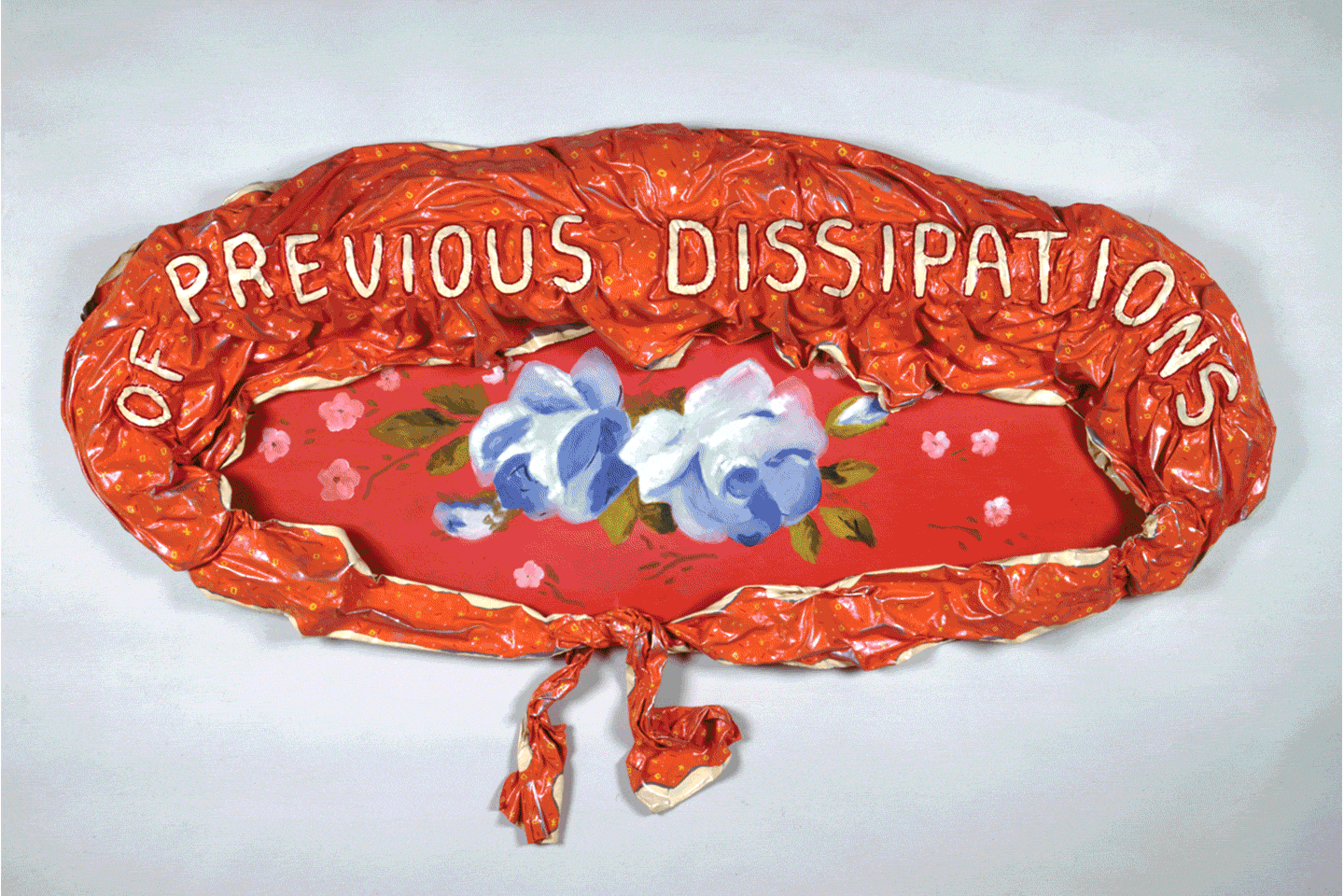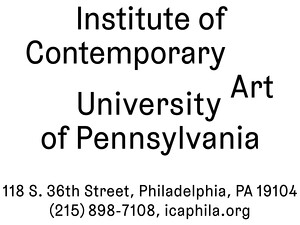The Plant That Heals May Also Poison
September 14–December 23, 2018
118 S.36th Street
Philadelphia, PA 19104
USA
The Institute of Contemporary Art, University of Pennsylvania, is pleased to present the first major United States exhibition of artist Ree Morton (b. 1936, Ossining, New York; d. 1977, Chicago) in nearly four decades.
Ree Morton produced a prescient body of work rich in emotion and philosophically complex. Long celebrated by peers and younger generations, Morton’s influence on contemporary art remains considerable yet muted, her legacy widely underrecognized. Gathered in this exhibition are works produced during her short but prolific career, which span mediums and materials; reimagine tropes of love, friendship, and motherhood; and radically assert sentiment as a legitimate subject of artmaking.
Though the eclectic arc of Morton’s practice was rooted in Postminimalism, a poetic approach to language and symbolism progressively distanced her work from easy categorization. The inclusion of personal narrative—through literary, theoretical, and autobiographical references—and use of bold color and theatrical imagery infused her objects with sly humor and a concern with the decorative, generating a feminist legacy increasingly appreciated in retrospect. Morton’s conceptually rigorous work can seem esoteric at times, yet her intention is ultimately one of generosity towards the viewer, and it is in the spirit of playfulness and joy that this exhibition hopes to expand.
Morton’s practice was profoundly shaped by her time in Philadelphia, where she attended graduate school at the Tyler School of Art and taught for several years at Philadelphia College of Art (now University of the Arts). A major sculptural work, Sister Perpetua’s Lie, was created for a 1973 exhibition at ICA and is currently on view in this retrospective. The exhibition features several of these rarely seen installations, along with a selection of drawings, sculptures, paintings, and archival materials which span a single decade of artistic production before Morton’s untimely death in 1977.
Ree Morton: The Plant That Heals May Also Poison is organized by Kate Kraczon, Laporte Associate Curator, and will be accompanied by a fully illustrated catalogue co-published with Dancing Foxes Press with texts by the curator, artist Nayland Blake, Kathryn Gile, and scholars Roksana Filipowska and Abi Shapiro.
Ree Morton received a BFA in fine arts from the University of Rhode Island in 1968 and an MFA from Tyler School of Art, Philadelphia, in 1970. Solo exhibitions during her lifetime include projects at Artists Space, New York (1973); the Whitney Museum of American Art, New York (1974); and the South Street Seaport Museum, New York (1975). Morton was included in the 1973 and 1977 Whitney Biennials. She has had major retrospectives at the New Museum, New York (1980); the Generali Foundation, Vienna (2008); the Drawing Center, New York (2009); and the Reina Sofia, Madrid (2015).
Morton taught at the Philadelphia College of Art (now University of the Arts) from 1970 to 1975, living in Philadelphia until 1972, before her move to New York. ICA commissioned the major work Sister Perpetua’s Lie in 1973 for the inaugural show of the exhibition series ”Made in Philadelphia,” and Morton’s works in subsequent ICA exhibitions include Lamps and Tables from the Whitney Museum of American Art installation To Each Concrete Man, 1974 (Improbable Furniture, 1977); a study for Manipulations of the Organic, 1977 (Made in Philadelphia 3, 1980); and Weeds of the Northeast #6 and #1, 1974 (Drawings: The Pluralist Decade, 1980, which traveled to the United States Pavilion of the 38th Venice Biennale that year). The 1998 ICA anniversary exhibition From Warhol to Mapplethorpe: Three Decades of Art at ICA featured six works by Morton; Many Have Run Away, To Be Sure, 1974; Terminal Clusters, 1974; Weeds of the Northeast #4 and #5, 1974; Regional Piece, 1976; and Untitled (Signs of Love), 1976.
Support for Ree Morton: The Plant That Heals May Also Poison has been provided by the Inchworm Fund. The Inchworm Fund is an endowment created to respond to ICA’s spirit of exploration, supporting artists and curators in their quest to uncover the unknown through multiyear research, exhibition, publication, and conversation. In naming the fund, visionary Philadelphia patron Daniel W. Dietrich, II wished to attract fellow contributors, encouraging ICA to reach and expand toward new possibilities.
ICA was recognized as part of the inaugural Sotheby’s Prize (2017) with a commendation that applauds the breadth and depth of ambitious exhibition research for Ree Morton: The Plant That Heals May Also Poison. Additional support for Ree Morton: The Plant That Heals May Also Poison has been provided by the Edna W. Andrade Fund of the Philadelphia Foundation, Nancy & Leonard Amoroso, Amanda & Andrew Megibow, and Norma & Lawrence Reichlin.
*(1) Ree Morton, Of Previous Dissipations, 1974. Oil on wood with celastic, 41 x 6 7/8 x 6 1/2 inches. Gift of Ree Morton Estate. The Museum of Modern Art, New York. (2) Ree Morton, Sister Perpetua’s Lie, 1973. 15 works on paper and canvas: acrylic, ink, crayon, and pencil on paper; chalk on paper; acrylic on canvas; watercolor on paper; chalk, wood, and acrylic on wood. © Generali Foundation Collection, Vienna. Photo: Markus Wörgötter. (3) Ree Morton, Souvenir Piece, 1973. Acrylic paint on canvas mounted on wood, wood, acrylic paint, and stones, 96 2/3 x 181 x 109 1/2 inches. Collection Fundação de Serralves - Museu de Arte Contemporânea, Porto, Portugal. Acquisition 1998. (4) Ree Morton, Bozeman, Montana, 1974. Enamel, flocking, and glitter on wood and celastic; colored light bulbs, approximately 84 x 132 x 3 inches. Courtesy of Beth Rudin DeWoody. All images: © Estate of Ree Morton. Courtesy Alexander and Bonin, New York.


